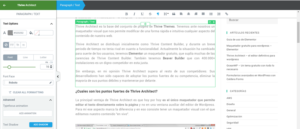Images are highly important content in any website, since immediately grab our attention, making them essential. However, they have a disadvantage, if they aren't optimized properly they might slow down our wepage's loading times and increase the server's resource consumption. This is the reason why optimizing images by adjusting their size and compressing them as much as possible is mandatory for every website owner of any type.
We can take on this task before uploading the images, there are plenty of tools to do so which allow us to adjust the images to whichever size and resolution they'll be visualized. This is something we have to do at every chance possible.
What if we could optimize this process within our server?
Not only we can, we must. Today we're going to talk about EWWW Image Optimizer, a free plugin capable of taking on this task which will save a lot of time and effort throughout the optimization process of our images. However, we cannot disregard the optimization prior to the upload, ideally we'd combine both methods.
Download the plugin from the official repository, activate it and verify that there are no problems with the installation. If out server is lacking the necessary graphic libraries, these will be installed automatically. If there was an issue, it will give warnings as well as suggestions on how to solve it.

What I like the most about this plugin is that once installed, it's done. There's no need to intervene in its work. New images will be optimized when we upload them and existing ones will be treated in the background.
Plugin configuration
Basic settings don't need to be changed. I simply want to point out that there's an option to optimize image using ewww.io.'s servers. The advantage of using workload service is that we alleviate our server from the heavy load that is image treatment.
In the Advanced Settings tab there are three interesting options: parallel optimization, which speeds up the optimization process although we may have to disable it if we notice performance drops. Scheduled optimization checks uploaded images and optimizes them whenever needed, and lastly, we can include the last two folders from the media library for massive processes. We also have the ability to include or exclude other folders manually as we deem necessary.

Inside the Redimension settings tab we can establish the maximum dimension we'd like, this way, any larger images will be automatically adjusted to fit a size appropriate for our website. It also gives the option to do this process selectively to specific sizes within the ones established for our installed theme and plugins.
An interesting setting is Size detection. Upon activation, it will show which images on our website are oversized by hovering our mouse over them

Last of all we have Bulk optimization, which scans every image and optimizes those that require it. This setting is usually used to process at once every uploaded image. To do this we need to temporarily disable Scheduled optimization.
If we adjust the view in the media library, we can see how nuch we've gained by optimizing images. Should we need it, we can also individually process any image we want.

Optimize with EWWW Image Optimizer, is it actually efficient?
This was the score we had in PageSpeed for our home before installing EWWW Image Optimizer

Once we've activated the plugin, we run a Bulk optimization and re-run the analysis in PageSpeed. The results speak for themselves.

Although EWW Image Optimizer does its job well, it needs our help. This is the score we get after having corrected any oversized images.
These were edited using tools in WordPress. EWWW Image Optimizer also improves native WordPress functions for image treatment.

In conclusion
Without a doubt EWWW Image Optimizer deserves a spot within the essential plugins for any WordPress installation. On top working flawlessly, it's also free. Paid versions offer further functionalities to those who need them.
This sets it apart from say, Smush Image Compression and Optimization, which its free version is limited to a maximum of 1MB per image. Any halfway decent picture greatly surpasses this size limit, rendering the free version useless.
I think that when a free version is offered, it shouldn't have such harsh limitations imposed on it, and that, for me, is what weighs the balance towards EWWW Image Optimizer.




